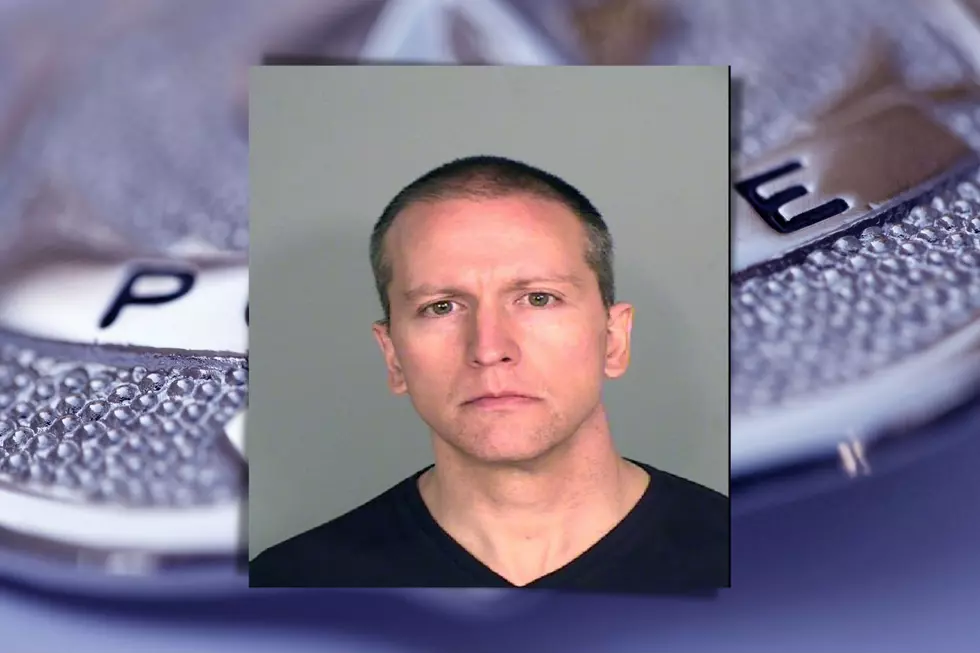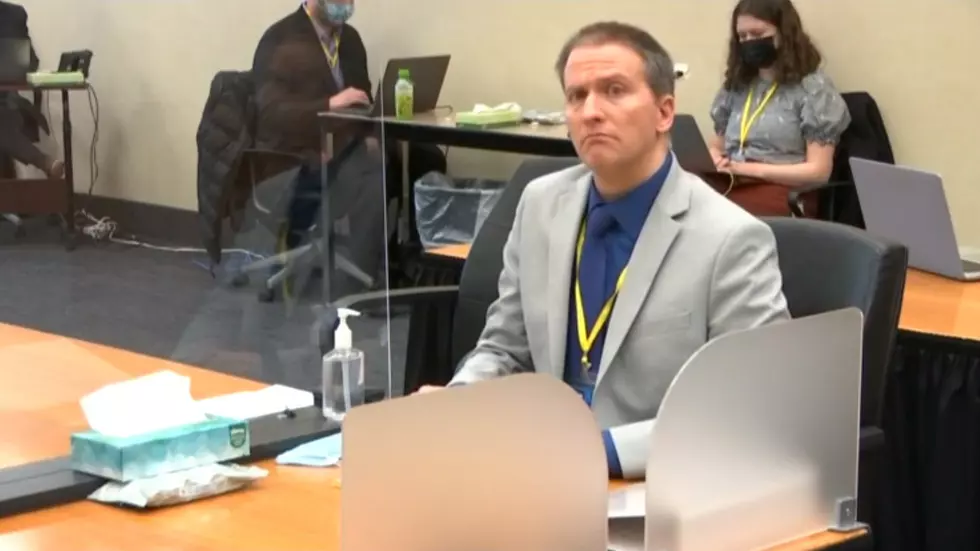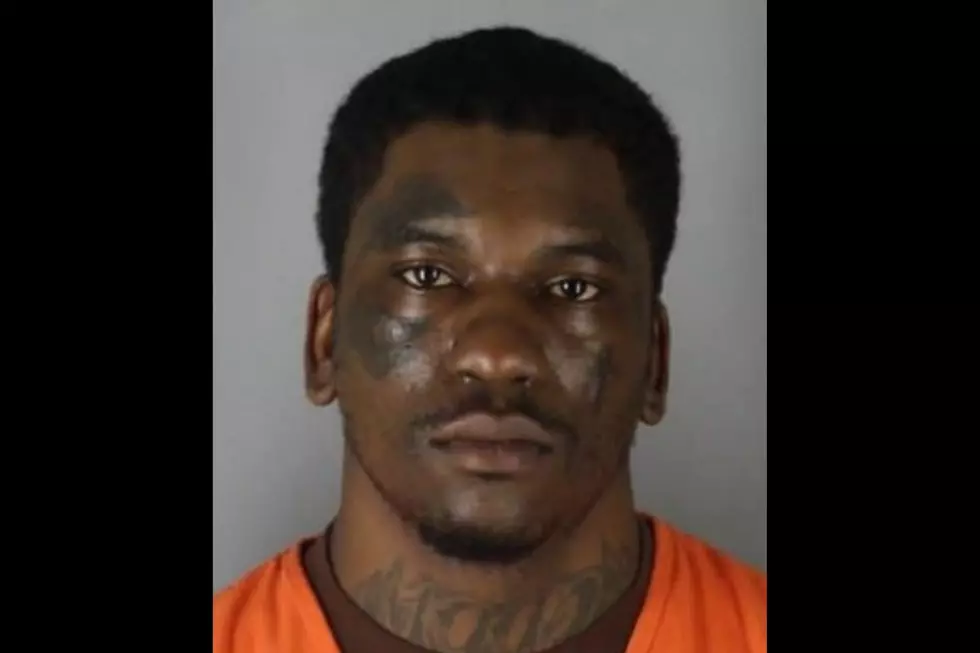
Chauvin Defense Began Calling Witnesses Today

MINNEAPOLIS (AP) — Former Officer Derek Chauvin was justified in pinning George Floyd to the ground because of his frantic resistance, a use-of-force expert testified for the defense Tuesday, contradicting a parade of authorities from both inside and outside the Minneapolis Police Department.
Taking the stand at Chauvin’s murder trial, Barry Brodd, a former Santa Rosa, California, officer, said police don’t have to wait for something bad to happen; they need only have a reasonable fear that there’s a threat and act accordingly.
“It’s easy to sit and judge ... an officer’s conduct. It’s more of a challenge to, again, put yourself in the officer’s shoes to try to make an evaluation through what they’re feeling, what they’re sensing, the fear they have, and then make a determination,” Brodd said.
He also said he doesn’t believe Chauvin and the other officers used deadly force when they pinned Floyd on his stomach, with his hands cuffed behind his back and Chauvin’s knee on his neck or neck area for what prosecutors say was 9 1/2 minutes.
Brodd likened it to a situation in which officers used a Taser on someone fighting with officers, and the suspect fell, hit his head and died: “That isn’t an incident of deadly force. That’s an incident of an accidental death.”
Several top Minneapolis police officials, including the police chief, have testified that Chauvin used excessive force and violated his training. And medical experts called by prosecutors have said that Floyd died from a lack of oxygen because of the way he was restrained.
But Brodd said: “I felt that Officer Chauvin’s interactions with Mr. Floyd were following his training, following current practices in policing and were objectively reasonable.”
Under cross-examination by prosecutor Steve Schleicher, Brodd agreed that the use of force must always be reasonable and that officers must stop or lessen that force until it becomes reasonable.
“Because that’s really the standard ... reasonability, right?” Schleicher asked.
“Yes,” Brodd replied.
The witness said it appeared to him that Floyd was still struggling while he was on the ground.
The matter of what is reasonable is important: Police officers are allowed certain latitude to use deadly force when someone puts the officer or other people in danger. Legal experts say a key question for the jury will be whether Chauvin’s actions were reasonable in those specific circumstances.
After Brodd initially said Chauvin’s knee was on Floyd’s neck area, top of the spine or upper back, Schleicher showed Brodd a still image from a body camera and got him to concede that Chauvin’s left knee was on Floyd’s neck.
Under questioning by Nelson, Brodd also testified that the bystanders yelling at the officers to get off Floyd complicated the situation for Chauvin and the others.
“The crowds started to grow in size, start to become more vocal. So now officers are always trained to deal with, right, so what threat is the biggest threat?” he said.
“Is it the suspect on the ground in front of me in handcuffs that we have relatively controlled? Or is it the unknown threat posed by the crowd that could go from verbal to trying to interfere with my arrest process in a matter of seconds?”
Brodd appeared to endorse what prosecution witnesses have said is a common misconception: that if someone can talk, he or she can breathe.
“I certainly don’t have medical degrees, but I was always trained and feel it’s a reasonable assumption that if somebody’s, ‘I’m choking, I’m choking,’ well, you’re not choking because you can breathe,” he said.
Chauvin, a 45-year-old white man, is on trial on charges of murder and manslaughter in Floyd’s death last May after his arrest of suspicion of passing a counterfeit $20 at a neighborhood market.
Chauvin attorney Eric Nelson has argued that the 19-year Minneapolis police veteran did what he was trained to do and that Floyd died because of his illegal drug use and underlying health problems, including high blood pressure and heart disease. Fentanyl and methamphetamine were discovered in his system.
As the defense began presenting its case on Tuesday after the prosecution rested following 11 days of testimony and a mountain of video evidence, Nelson sought to deflect blame away from Chauvin.
He brought up a 2019 arrest in which Floyd suffered from dangerously high blood pressure and confessed to heavy use of opioids. And he suggested that the 46-year-old Black man may have suffered last May from “excited delirium” — what a witness described as a potentially lethal state of agitation and even superhuman strength that can be triggered by drugs, heart disease or mental problems.
Nelson also elicited testimony from another witness that Floyd panicked and cried over and over, “Please, please, don’t kill me!” when officers first approached his SUV at gunpoint on the day of his death.
Nelson called to the stand Nicole Mackenzie, a Minneapolis police training officer, to expound on excited delirium. While Floyd was pinned to the ground, a relatively new officer at the scene had mentioned that Floyd might be suffering from such a condition.
Mackenzie testified that incoming officers are taught to recognize the signs of excited delirium: Suspects may be incoherent, exhibit extraordinary strength, be sweaty or suffering from abnormally low body temperature, or seem like they suddenly snapped.
She said officers are also trained to call paramedics, because a person in that state can rapidly go into cardiac arrest.
Mackenzie testified that she provides training on excited delirium only to new recruits. And Judge Peter Cahill cautioned jurors that there is no evidence Chauvin had the training.
An expert in forensic medicine previously dismissed Nelson’s excited-delirium suggestion during the prosecution’s case, saying Floyd met none of the 10 criteria developed by the American College of Emergency Physicians.
The defense’s first witnesses testified about a May 6, 2019, incident in which Floyd was arrested. Former Officer Scott Creighton said he drew his gun and pulled Floyd from a car after Floyd did not comply with orders to show his hands.
Another witness who responded to that call, now-retired paramedic Michelle Moseng, testified that Floyd told her he had been taking multiple opioids about every 20 minutes.
“I asked him why and he said it was because he was addicted,” said Moseng, who described Floyd’s behavior as “elevated and agitated” before the judge struck that remark from the record.
Moseng said she recommended taking Floyd to the hospital based on his high blood pressure, which she measured at 216 over 160.
On cross-examination, prosecutor Erin Eldridge got Moseng to testify that Floyd’s respiratory output, pulse, heart rate, EKG and heart rhythms were normal. Eldridge said Floyd was taken to the hospital and released two hours later.
The prosecution’s expert witnesses rejected the notion that drugs or underlying health problems caused Floyd’s death, with a cardiology expert on Monday saying that Floyd appeared to have “an exceptionally strong heart.”
Another defense witness Tuesday was Shawanda Hill, who was in the SUV with Floyd before his ill-fated encounter with Chauvin.
When he saw an officer at the window with a gun, Floyd “instantly grabbed the wheel and he was like, ‘Please, please, don’t kill me. Please, please, don’t shoot me. Don’t shoot me. What did I do? Just tell me what I did,’” Hill testified.
Also testifying was Minneapolis Park Police Officer Peter Chang, who helped at the scene that day. He said he saw a “crowd” growing across the street that “was becoming more loud and aggressive, a lot of yelling across the street.”
“Did that cause you any concern?” Nelson asked.
“Concern for the officers’ safety, yes,” Chang replied.
Nelson hasn’t said whether Chauvin will take the stand. Testifying could open him up to devastating cross-examination but could also give the jury the opportunity to see any remorse or sympathy he might feel.
SAY WHAT? 15 Minnesota Town Names That Are Hard to Pronounce
More From KDHL Radio




![Derek Chauvin Sentenced to 22.5 Years in Prison [UPDATED]](http://townsquare.media/site/669/files/2021/04/Derek_Chauvin_Trial_Verdict.jpg?w=980&q=75)





